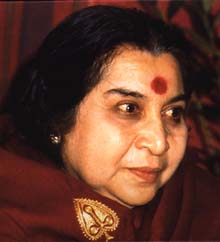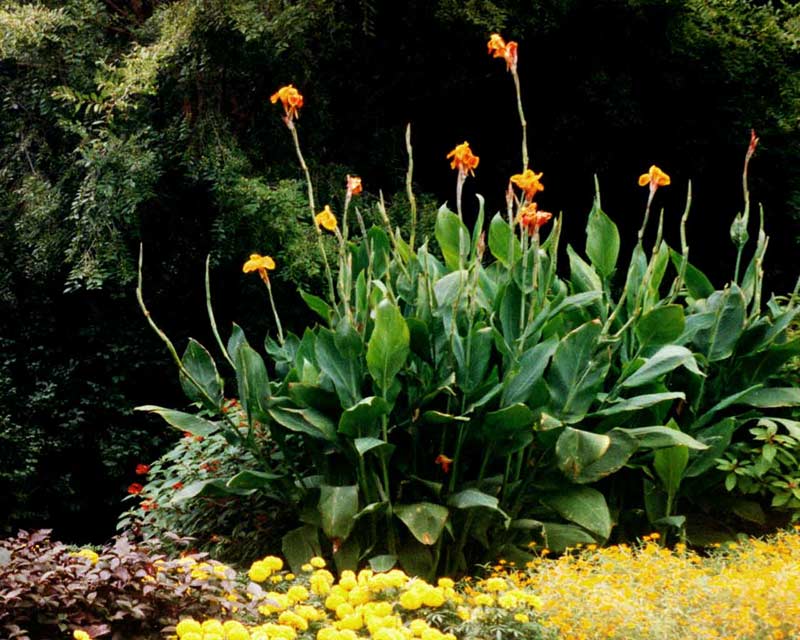Meditation
 A person with a healthy Nabhi is relaxed, peaceful and generous, and is a satisfied person. The Nabhi Chakra relates closely to the home and well-being of the family. If our welfare seems threatened, if we do not feel at ease, or if we have trouble fulfilling our basic needs, then the Nabhi chakra can feel pressured. The problem seems to be that, in the West, we are often caught up in endless desires for security, sensation, power and control, including the desire for material wealth. To maintain our satisfaction within, we must also be able to exist in a balanced state of satisfaction without things beyond the basic needs.
A person with a healthy Nabhi is relaxed, peaceful and generous, and is a satisfied person. The Nabhi Chakra relates closely to the home and well-being of the family. If our welfare seems threatened, if we do not feel at ease, or if we have trouble fulfilling our basic needs, then the Nabhi chakra can feel pressured. The problem seems to be that, in the West, we are often caught up in endless desires for security, sensation, power and control, including the desire for material wealth. To maintain our satisfaction within, we must also be able to exist in a balanced state of satisfaction without things beyond the basic needs.
Since this Earthly realm is full of so many attractions and choices it is easy to become dissatisfied. The way through these choices has been charted in all sustainable societies and true religions as a principled code or Way of life called Dharma. The more one enjoys becoming the Spirit, the less time one has for
wrongful things, outside of Dharma. The seeker of truth surrenders desires and agendas so they feel satisfied within, whatever they have, and so they focus their desire power on their Spiritual unfoldment.
The presiding Deity, or personification, of the Nabhi principle is Shri Vishnu and his consort, Shri Laxmi. Many powers are invested in these two. He is responsible for sustaining Dharma and leading the human evolution. She grants physical and material well-being. On the left, she is Shri Gruhalaxmi, the wife or Goddess of the household. The wife must be respected and also be respectable. So many of our societies’ problems stem from poor quality of homelife in the West with the resulting sense of dissatisfaction.
Food is also closely involved with satisfaction and the Nabhi. Too much attention on food, or fasting, or the wrong type of foods can cause the Nabhi chakra to “catch”. We eat to live, not live to eat. Our food and well-being are prerequisites for our functioning both within and without. Because the quality of our attention is closely involved with the liver, which means we can get caught up with thinking and worrying, we should avoid fatty foods that are testing for the liver. Food that soothes the Nabhi and cools the liver helps the attention attain thoughtless meditation. True satisfaction can only be sustained when our Spirit comes into our attention. It is the Spirit’s power, the Kundalini, which has created, evolved and sustained us, and it is the Kundalini that connects us to that Source of satisfaction.
Through the practice of simple Sahaja Yoga techniques, it is posssible to clear the Nabki Chakra and experience deep satisfaction and contentment, improved attention and deeper meditations.
(Photograph: dharma.indviews.com)
 The founder of Sahaja Yoga, Shri Mataji Nirmala Devi, worked out the method of raising people’s Kundalinis en masse, the method used in Sahaja Yoga. After a new person’s first program, described in the article, “Your First Sahaja Yoga Program”, we teach you how to clear your chakras each day and how to bring up your Kundalini each day. We also encourage you to feel the difference in the depth of your meditation when you meditate with other people compared with when you meditate alone.
The founder of Sahaja Yoga, Shri Mataji Nirmala Devi, worked out the method of raising people’s Kundalinis en masse, the method used in Sahaja Yoga. After a new person’s first program, described in the article, “Your First Sahaja Yoga Program”, we teach you how to clear your chakras each day and how to bring up your Kundalini each day. We also encourage you to feel the difference in the depth of your meditation when you meditate with other people compared with when you meditate alone.
Sahaja Yogis who have been meditating for years still clear their chakras daily and attend collective meditation as often as possible; preferably daily and certainly a minimum of once a week.
There is an important reason to clear your chakras daily: when your Kundalini first rises, it is like a few strands of a rope coming up. It can come up a lot more strongly if your chakras are clearer. While the Kundalini does begin to clear the chakras, when it is up, our chakras do need some help – hence the Sahaja Yoga clearing methods taught at programs, using the natural elements.
The connection between clearing your chakras and the Kundalini is this: the clearer your chakras are, the more the strands of Kundalini can rise. The more strands of Kundalini that rise, the deeper the meditation you have. The deeper your meditation is, the more peaceful and connected to the Collective Unconscious you are.
The connection between the Kundalini and collective meditation is this: your Kundalini comes up more strongly when you are in contact with other people whose Kundalinis are up. Because you are connected to the Collective Unconscious, you are also connected to everyone else who is connected to the Collective Unconscious. Hence, when you meditate together, everyone’s individual connections become stronger, i.e. their Kundalinis rise more strongly when people are together. When people are together in meditation, the peace and deep, quiet bliss that results is indeed the “peace that passeth all understanding” spoken of in the Bible.
(Photograph courtesy of copyright-free-pictures.org.uk)
 On the evening of 12 December 1981 there was a meditation meeting held by Sahaja Yogis in Shri Mataji’s presence in England. Shri Mataji asked one Yogi of Polish origin to take an important role in the meditation. And She said to her, “Now you have to pray for Poland from your whole heart because there is a great danger coming. Pray that the bloodshed can be avoided.”
On the evening of 12 December 1981 there was a meditation meeting held by Sahaja Yogis in Shri Mataji’s presence in England. Shri Mataji asked one Yogi of Polish origin to take an important role in the meditation. And She said to her, “Now you have to pray for Poland from your whole heart because there is a great danger coming. Pray that the bloodshed can be avoided.”
So this Yogi prayed from her heart during the whole meditation. And next day it was announced that on the same night, 12-13 December, martial law was proclaimed in Poland. There was no war because nobody was fighting, but some people were put in gaol and some citizens’ rights were suspended. In Warsaw and other big cities there were tanks and the Polish army roamed the streets. There was a small fight in one of the coalmines, and ten workers were shot dead by the police.
The Polish Yogi was disappointed. She thought that her prayer and Shri Mataji’s efforts failed. But she didn’t know that all this was really a blessing. If on that night Shri Mataji hadn’t worked for Poland and hadn’t saved our country, we would have been in severe trouble because there were huge armies from all the communist countries waiting all around the Polish borders, ready to enter and massacre everyone. Even some of the troops inside Poland were from outside countries. Everything depended on this one night: only hours separated Poland from disaster.
I was in Poland at that time and I was really surprised by the mildness of the event. Of course, people were not happy, and many anti-communist people were held in gaol, but life was almost quiet and normal. In a short time the tanks disappeared from the streets and telephones started working, and although many telephone lines were tapped, it didn’t do much harm to the average citizen. There was little bloodshed, and no major problems.
The Polish Yogi told me her story recently when I brought her a Polish newspaper with the whole story of what had occurred that night. She was surprised, as she had not known before the full significance of the events of that night.
Hania Turczyn-Zalewska
Poland
 1. It’s easy.
1. It’s easy.
I don’t have to spend years living in the mountains to achieve enlightenment. I don’t have to give up anything or spend weeks in silence. I don’t have to learn mantras or wear special clothes or even try to clear my mind. The meditation simply happens spontaneously. The classes are easy and fun, and as long as I keep up my daily ten minutes of meditation I find I am able to achieve a deep and peaceful meditation on a regular basis.
2. It’s free.
I don’t pay for my meditation. Even my introductory 8-week course was free. There are no catches, and there are no hidden expenses. If I missed attending classes one week, it didn’t matter. I just picked up the classes again when I could manage it. It is simply the generosity of spirit of other Sahaja Yoga practitioners that allows Sahaja Yoga to be taught to whomever desires it, at no cost.
3. I can see results.
I felt the benefits from the first time I meditated. I felt relaxed and I felt a deep sense of calm. Now I can also feel my chakras (energy centres) and through the techniques learnt along the way I can understand the vibrations of my own energy centres. If I feel unwell I meditate and use the techniques I’ve learnt to clear my chakras, and I can then feel the centres clearing, and as a consequence my health improves.
4. It’s all-inclusive.
All the major religions and their core teachings are acknowledged and respected in Sahaja Yoga. No one spiritual journey is right or wrong. And through meditation the wisdom of all the great gurus and saints is easily revealed and understood. In fact, I’ve found that since I’ve been meditating I’ve come to understand and appreciate the teachings of great teachers such as Lao Tse, Buddha and Mohammed.
5. I’m my own boss.
I meditate and introspect at my own pace. I don’t have to keep up with others, or feel pressured into doing things I’m not comfortable with. I am my own teacher, my own guru, my own master. This technique of meditation empowers me and enables me to help myself. I don’t have to rely on anybody else. Of course, there are many people in Sahaja Yoga who can teach me a great deal about the meditation and its various techniques. However, all that I need is ultimately within me.
6. It’s everywhere.
Sahaja Yoga is practised in almost every country in the world. So, no matter where I travel (whether it’s within Australia or internationally) I can always locate a local Sahaja Yoga program that I can attend. Whenever I get the chance, and no matter where I am, I try to link up with other Sahaja Yogis and enjoy a collective meditation. (Meditating with others is a much deeper and more powerful experience than meditating alone.)
7. It’s portable.
I don’t need to take anything with me to meditate: no mats, no potions, no special clothing or books. I can meditate anywhere – in a quiet room or on a noisy bus; at the beach or watching a movie. Thoughtless awareness (the state of meditation) is easy to achieve if you keep meditating daily, and it can be achieved in almost any situation. (I was pleasantly surprised to learn this as I was under the misunderstanding that you had to have complete silence before you could meditate. And with two children, I can rarely find “complete silence” in our house!)
8. It makes sense.
Everything I’ve learnt makes sense. There is a lot of common sense in this meditation, and even though not everything was known to me (for example, the chakras and their respective qualities), once I had a chance to learn more about the meditation, it felt very natural and comfortable.
9. Everybody does it.
When you begin a hobby or join a new group, you often find that there are particular types of people who are in the group with you. For example, some groups attract younger people, others older folk; some groups have a lot of people who are wealthy, or people who live in a certain part of town. In Sahaja Yoga you will find people from every walk of life, from every demographic – male and female, young and old, rich and poor, every shape, size and colour, with varying interests, languages and beliefs. You don’t have to be a certain type of person to do this meditation. It is one of those rarities: something for everybody.
10. I feel good.
Without fail, every time I sit down to meditate I feel better. Whether I manage to have a deep meditation or not makes no difference. There is more laughter, joy and contentment in my life since I’ve started meditating, and as a consequence my family and friends are reaping the benefits.
Anna Penton